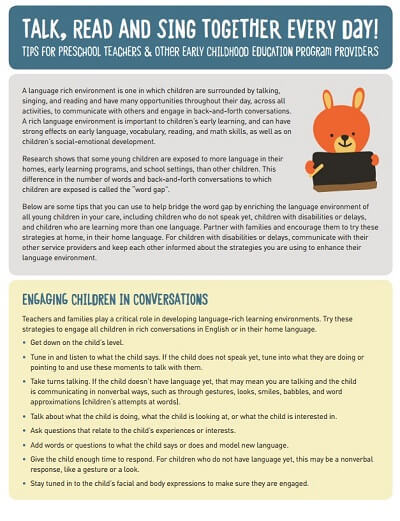Talk, Read and Sing Together Every Day! Tips for Preschool Teachers & Providers

A language-rich environment is one in which babies and toddlers are surrounded by talking, singing, and reading and have many opportunities throughout their day, across all activities, to communicate with other and engage in back-and-forth interactions. A language-rich environment is important to children’s early brain development, and can have strong effects on early language, vocabulary, reading, and math skills, as well as on children’s social-emotional development.
Research shows that some young children are exposed to more language in their homes, early learning programs, and school settings, than other children. This difference in the number of words and back-and-forth interactions children are exposed to during the early years is called the “word gap.”
The tip sheet includes tips that you can use to help bridge the word gap by enriching the language environment of all young children in your care, including children who do not speak yet, children with disabilities or delays, and children who are learning more than one language. Partner with families and encourage them to try these strategies at home, in their home language. For children with disabilities or delays, communicate with their other service providers and keep each other informed about the strategies you are using to enhance their language environment.